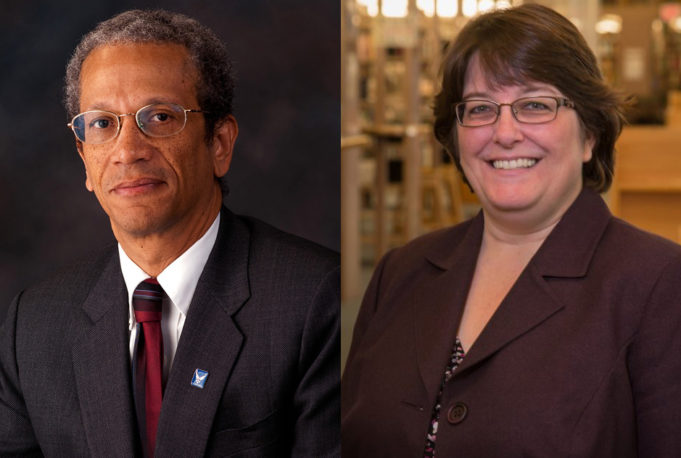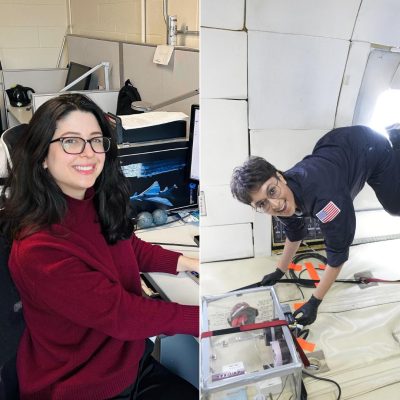
3 Questions: Defining the Institute’s values
MIT’s Values Statement Committee has been charged by Chancellor Cynthia Barnhart and Provost Martin Schmidt with engaging the MIT community in the foundational work of developing a statement of shared values, one that is grounded in universal ideals but also speaks to MIT’s distinctive character and culture. The Committee is co-chaired by two MIT alumni: Daniel Hastings SM ’78, PhD ’80, head of the Department of Aeronautics and Astronautics and Cecil and Ida Green Education Professor, and Tracy Gabridge ’88, deputy director of the MIT Libraries. They spoke with MIT News about ideas and themes that are emerging in the committee’s conversations, and the process of creating a statement that reflects the voices and values of the MIT community.
Q: How are the committee’s discussions progressing? What are they like?
Hastings: I’ve found that even though we’re interacting on Zoom, there is a lot of intense discussion. We meet every Friday, and I’m not sitting there twiddling my thumbs, wondering how to keep the conversation going!
There’s intense discussion because the committee represents a broad set of communities at MIT. Members have brought specific expertise to bear that has been very helpful. One thing I’ve asked people to do is reflect upon their experiences with other academic institutions, as undergraduates, graduates, faculty, or staff. By looking at those experiences and contrasting them with what we see at MIT, it becomes clearer what MIT values are — or are not.
We’re aiming for a set of statements that captures the distinctiveness of MIT, as opposed to a statement that says, “We should have integrity.” One hopes that any organization would say that — it’s kind of a given. General statements can be valuable, but we’re mainly looking for what makes MIT unique.
Gabridge: The conversations with this committee are meaningful because the topic of institutional values is so rich. People are eager to talk about them and to put in the work to bring them forward. The committee’s efforts to come to a common understanding of our charge and how we want to proceed have been thought provoking and useful. The team has jelled quickly.
I think we’re going to find that there are core themes shared across communities at MIT, and we’re looking for that universality. A question we ask is, “What characteristics of MIT were compelling to you when you chose to join this community?” The reasons people choose to come to MIT are remarkably similar.
I also suspect we’ll learn a lot about what’s important in each subcommunity that may not be a universal value. I’m looking forward to learning about that. We’ve had rich discussions about the tensions among values and how to navigate these tensions. We’re teasing out all of these ideas to find the “sweet spot” that acknowledges many different realities to make a distinctive statement about MIT.
Q: How is the committee engaging with outside sources, communities and groups in building the values statement?
Gabridge: We’ve gotten inspiration from a number of sources, both external to and within MIT. We’re examining the artifacts of MIT, from recent history all the way back to its founding, to uncover how the culture and values have expressed themselves over time. We find that what makes MIT distinct is often expressed in things that have already been created. It will be interesting to see how culture and values have stayed the same or changed over time.
To develop MIT’s values statement, we want to make sure we’re inclusive of as many voices across the community as possible. We started with the idea that we want everybody in the community to have at least two opportunities to contribute their thoughts. And we are doing targeted outreach throughout the community. An exciting area of exploration is working with professors Ceasar McDowell, Deb Roy, and Dimitra Dimitrakopoulou on in-depth methods of civic engagement. People who want to engage in this work will find ample opportunity to get their ideas into the mix, including the ability to invite a committee member to local meetings.
Hastings: The literature we’re reviewing is designed to help us think about what it means to have institutional values, as opposed to personal values. And once you get into it, you discover different modifiers: core values, accidental values, background values. Another thing I discovered is that if you go back and look at the various conversations about values at MIT, you’ll see that what some people have identified as values are really attributes. Or you might find a code of conduct, as opposed to a statement of values. It’s a very broad range.
Q: What do you personally find most valuable about the committee’s work?
Hastings: Like Tracy, I’m an alum. I was here as a graduate student and then later on, joined the faculty. So collectively I’ve been at MIT for 39 years. I’ve certainly seen the institution evolve a lot in terms of what it does. And I would say its values have evolved as well. Talking with people about MIT’s values has reminded me of things about MIT that I like and appreciate. But it’s also reminded me of other aspects, not all of which are entirely positive. In that sense it has been reflective for me, and I appreciate that level of reflection.
Gabridge: The past few years have been challenging, and as MIT reexamines its culture, this committee’s effort is positive and generative, even while coming to terms with past events and tensions. It enables us to make a statement about who we want to be in a proactive way that feels foundational for MIT. It is exciting work.

